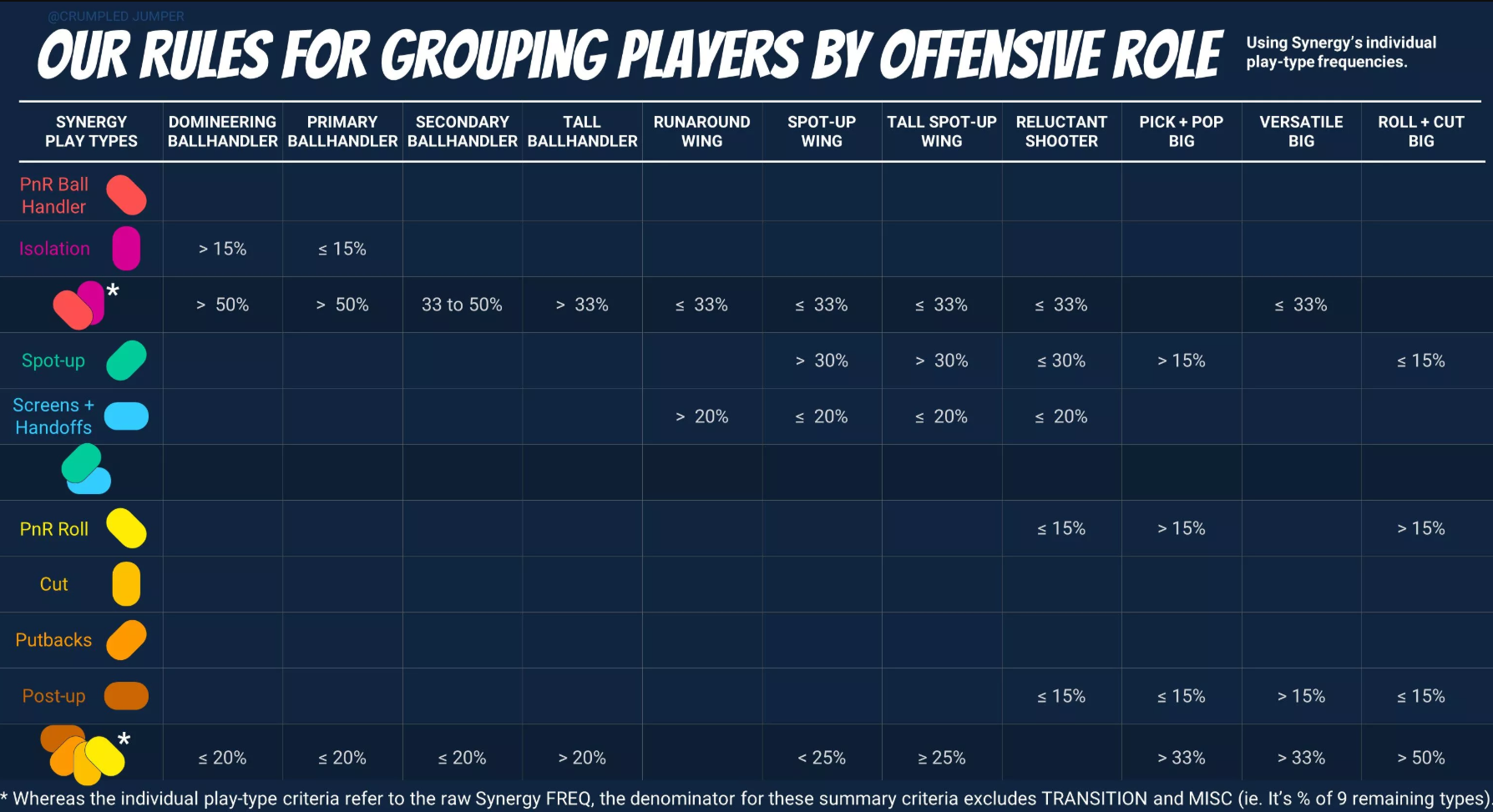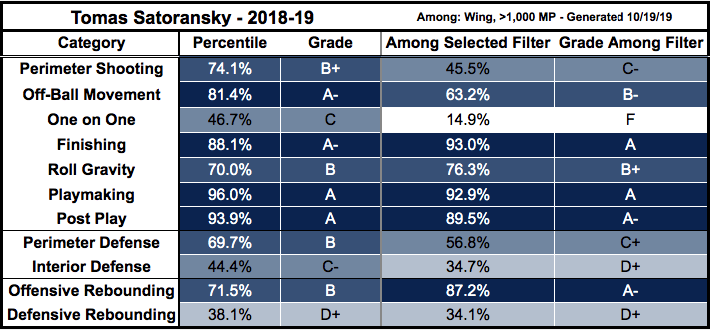We here at The BBall Index possess an insatiable desire to better understand basketball. One of our latest endeavors delves into optimization. We researched which players would be better optimized if they were utilized in a different role. Additionally, we researched which of the 11 offensive roles feed into other roles as players progress throughout their careers. You could consider this an offensive role ladder.
At a high level, roles are determined by how frequently a player engages in each of the synergy play-types.

Thanks to our new data rating how each player performs in each role, we can identify how well every player is being optimized in his deployment. Ahead of the new season, let’s identify some guys that are prime for improved optimization.
Tobias Harris
Last year, Harris behaved as a tall creator. Had he been utilized as any other offensive role, he would have been better optimized. Harris performed the worst in the tall creator role, relative to the other 10 roles.
According to our optimization database, Tobias Harris had the 9th worst opportunity cost among all players that logged at least 300 minutes in 2018-19. The opportunity cost is a measure of missed opportunity in how the player was utilized against how he performs in his ideal role. Specifically, Harris would have been 10.5 percent more impactful if he was properly optimized.
His optimal role? Anything that would have him behave as a wing. Harris rated in the 95th percentile as a movement wing, tall spot-up wing, and spot-up wing. Given his A grades in our perimeter shot, off-ball movement, and one-on-one categories during his time in Philadelphia, this makes perfect sense.
Here’s one suggestion on how to increase his optimization while incorporating his new teammate:
The Sixers should run this action for Al Horford and Tobias Harris this year.
Fake flex screen into a pindown: pic.twitter.com/r50h99tQzD
— Jackson Frank (@jackfrank_jjf) October 17, 2019
For his career, Harris is 36.4 percent three-point shooter. However, there is reason to believe he is closer to a 40 percent shooter from distance. Over the past two season, on 838 attempts, Harris is shooting 40.5 percent from beyond the arc. Given it takes 750 career attempts to learn a player’s true three-point ability, this increased marksmanship from Harris may be his new reality.
Furthermore, last season, as a 76er, Harris posted a 1.46 points per possession (PPP) on cuts. That mark was 8th best in the league among those that played in at least 10 games and had 1 such possession per game. The league leader given this criteria? Jimmy Butler.
With Butler now in Miami, there is plenty of wing play-type opportunities that need to be filled. For Harris, this creates a circumstance to see his optimization greatly increased.
Marc Gasol
Marc Gasol’s optimization last year was worse than Harris’s. Gasol’s 12.9% opportunity cost was 4th worst in the league among those that played at least 300 minutes. Utilized as a versatile big, Gasol ranked in the 85th percentile among the role. His best optimization would have seen him leaned on as a tall creator, as he ranked in the 94th percentile within that role.
Last year, Gasol posted a B+ grade in off-ball movement, one-on-one, and roll gravity, to go along with an A in playmaking. There also appears to be room for improvement. Gasol posted a B- in finishing last season, while having a poor PPP on post ups. While post ups are an inefficient shot type, Gasol was significantly below his norm around the rim in Toronto. While his career mark from within three feet of the basket is just north of 68 percent, as a member of the Raptors Gasol shot 58 percent at the rim.
With Kawhi Leonard and his 30+ percent usage from last year now in Los Angeles, Toronto is going to need Gasol to step into more of a creator role. Gasol’s optimization should improve in 2019-20.
Tomas Satoransky
We saved the worst for last, in terms of optimization. Satoransky had a 13.1 percent opportunity cost last year the 3rd worst rating among those that played at least 300 minutes. He was utilized as a secondary creator, when he should have been provided more responsibility. Satoransky would have finished in the 92nd percentile offensively if used as a primary creator. Luckily for Chicago, secondary creators feed directly into primary creators. According to our research, 65 percent of players who evolve into primary creators do so from the secondary creators role.
Last season, Satoransky posted a B or better in 6 of the 7 offensive categories we grade, with the exception being one-on-one. He hit an A- or better in off-ball movement, finishing, playmaking, and post play.

Going to the Bulls presents an opportunity for Satoransky to see an increased usage as a pick and roll ball handler. Outside of Zach LaVine, no one else on the Bulls should be used as a pick n’ roll operator more often than Satoransky. Whether Jim Boylen is capable of player optimization is another story.
Click HERE for access to our $5 Data & Tools package and start watching basketball smarter today!
